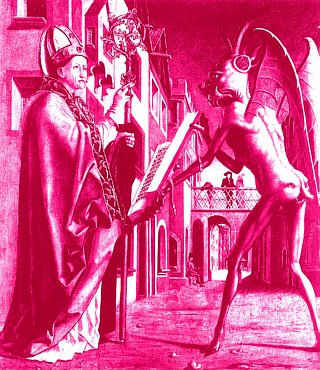
The 2000-year-old Celtic harvest and New Year festival, Samhain, was celebrated on 1st of November. Celts usually lived in Ireland, United Kingdom and northern areas of France. This festival marked the end of pleasant summers and the beginning of bitter cold. These people believed in evil spirits and witchcraft and thought that they get loose on Earth and roam about on the night before New Year in search of preys and victims. Thus, they painted their faces and wear terrible costumes to frighten away these ghosts and witches so that they would not harm them and their cattle and crops. The inexplicability of certain natural occurrences gave rise to most of their fears and Druids and the Celtic priests cashed in the opportunity by claiming that they could master these spirits and even make predictions and foretell the future with their help.
Though, Christians tried to celebrate 1st November as the peaceful and serene All Saints' Day but soon the festivities of Samhain caught favor among the Christian youths and Halloween became the day of big bonfires, grand parades, costumes, trick-or-treating and Jack-o'lanterns and carved pumpkin décor.
Halloween actually has dual origins. The first being a pre-Christian Celtic feast which is associated with the Celtic New Year. The Christian aspect of the holiday is the second. Pope Gregory IV, in 835, changed the celebration for martyrs (and later all saints) from May 13th to November 1st. All Saints Day is a holy day of obligation where we honor all saints, not just those canonized. Saints and holy people are called "hallowed" in England, thus All Saints Day is known as "All Hallow's Day." The evening before "All Hallow's Eve" or "holy evening." Later this was shortened to "Halloween." All Souls Day is celebrated on November 2nd. The church's reason for these feasts is to remember those who have died, whether canonized or not. We celebrate the "communion of saints," reminding us that the church is truly one and not limited to time or space. A Roman Catholic Pope decided on the day Halloween would fall. Halloween is the day before the Catholic religion celebrates All Souls'Day. Catholics can and do celebrate Halloween. Halloween is also Guy Fawkes Day.
Many Catholics celebrate Halloween, but several aren't sure if they should. Several believe that Halloween is evil and dangerous. However, the true origin of Halloween is both Christian and American.
A Pope decided the date of Halloween because All Saints Day is on November 1, Halloween is on the last day of October. The day before this feast was called "All Hallowe'en."
In 998, St. Odilo, who was a great abbot in a France monastery added a celebration on November 2. All Soul's Day was a day filled with prayer for the souls who died. This feast spread through all of Europe.
For those in Hell, people banged on pots on All Hallowe'en to let the people in Hell know that they were not forgotten.
In the fourteenth and fifteenth centuries, thousands of people died from the "black death" in France. During this time, people started to wear costumes on All Soul's Day. Since death was very apparent, Catholics reminded each other of their own mortality. There was an increase in Masses during All Soul's Day. They also used art to express themselves.
People started to dress up in costumes to express the dance of death. For those who celebrated Halloween, they dressed up at night. Americans added Trick or Treating to Halloween.
During the 1500s - 1700s, English Catholics were treated very badly. They had no rights legally, couldn't hold office, had heavy taxes, and it was a capitol offense to have Mass. Sometimes Catholics would fight back. They had a plot to destroy Protestant King James I and Parilament with gunpowder on November 5, 1605. Guy Fawkes was the guy in charge of the gunpowder, but he was captured and hung. This became a celebration in England known as Guy Fawkes Day. They wore masks, visited Catholics, and demand cake and beer. Hence, trick or treat.
Guy Fawkes Day arrived in the colonies with the English settlers. By then King James and Guy Fawkes were forgotten, however, trick or treating was fun and remained. Eventually, it was moved to October 31, the day of the Irish-French Dance of Death.
In America, Halloween became a regular tradition in the 1800s. Europe doesn't celebrate it even though much of the customs came from there.
No comments:
Post a Comment